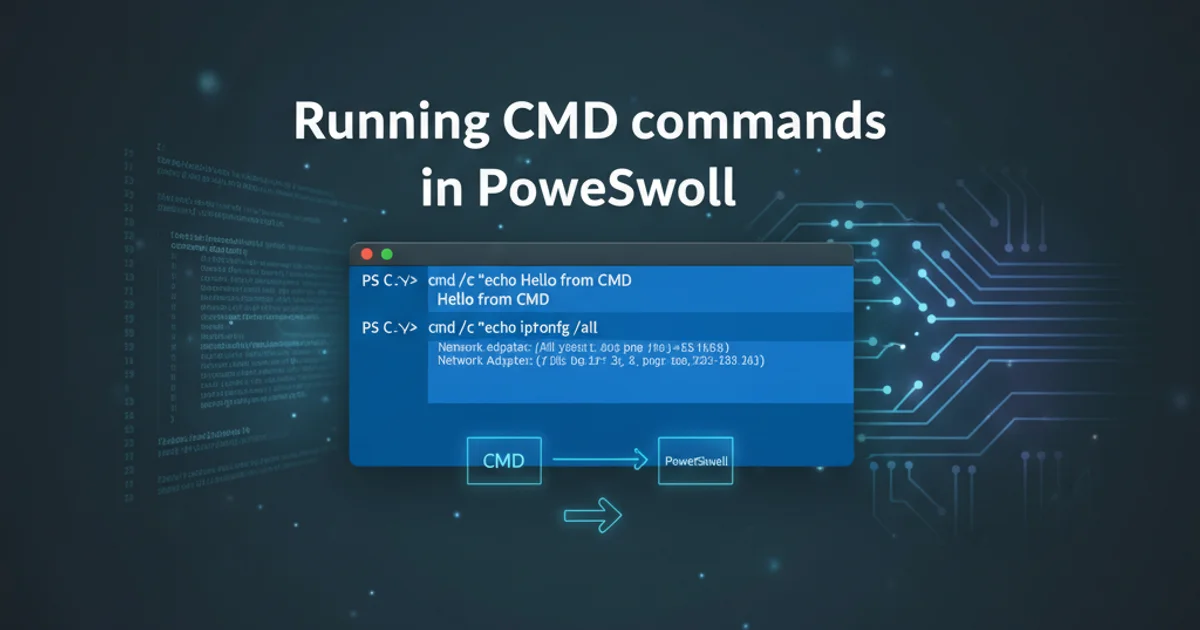How to delete Windows directories with cmd?
Categories:
How to Delete Windows Directories Using Command Prompt (CMD)

Learn the essential command-line techniques for safely and effectively removing directories and their contents in Windows, including handling common errors and permissions.
Deleting directories in Windows is a common task, but doing so via the graphical user interface (GUI) isn't always the most efficient or even possible method. The Command Prompt (CMD) offers powerful tools for managing files and folders, including robust commands for directory deletion. This article will guide you through the RMDIR (or RD) command, its various options, and best practices for safely removing directories, even those with stubborn files or permission issues.
Understanding the RMDIR/RD Command
The primary command for deleting directories in Windows Command Prompt is RMDIR, which can be abbreviated as RD. This command is used to remove an empty directory. If the directory contains files or subdirectories, RMDIR will fail unless specific options are used. Understanding these options is crucial for effective directory management.
RMDIR [/S] [/Q] [drive:]path
RD [/S] [/Q] [drive:]path
Syntax for the RMDIR/RD command
Let's break down the parameters:
[drive:]path: Specifies the directory you want to delete. This can be an absolute path (e.g., C:\Users\YourUser\Documents\OldFolder) or a relative path (e.g., .\OldFolder if you are already in the parent directory)./S: This option is critical. It tells RMDIR to delete a directory and all its subdirectories and files in addition to the directory itself. Use this with extreme caution, as it performs a recursive deletion./Q: This stands for 'quiet mode'. When used with /S, it suppresses the confirmation prompt that usually appears before deleting an entire directory tree. This makes the deletion non-interactive. Again, use with extreme caution.Basic Directory Deletion
To delete an empty directory, navigate to its parent directory or provide the full path. If the directory is not empty, the command will fail with an error message.
:: Delete an empty directory named 'MyEmptyFolder'
RD MyEmptyFolder
:: Delete an empty directory using its full path
RD C:\Projects\OldEmptyProject
Examples of deleting empty directories
Deleting Non-Empty Directories (Recursive Deletion)
When a directory contains files or subdirectories, you must use the /S switch. This will recursively delete everything within the specified directory, and then the directory itself. If you omit /Q, you will be prompted for confirmation.
:: Delete a non-empty directory, prompting for confirmation
RD /S MyNonEmptyFolder
:: Delete a non-empty directory using its full path, prompting for confirmation
RD /S C:\Users\Public\TempFiles
Examples of deleting non-empty directories with confirmation
RD /S. There is no undo for this operation, and deleted files cannot be recovered from the Recycle Bin.Force Deletion Without Confirmation (Quiet Mode)
For automated scripts or when you are absolutely certain about the deletion, you can combine /S with /Q to suppress the confirmation prompt. This is the most powerful and potentially dangerous form of the command.
:: Force delete a non-empty directory without confirmation
RD /S /Q MyCriticalFolder
:: Force delete a non-empty directory using its full path without confirmation
RD /S /Q D:\Backup\OldData
Examples of force deleting directories without confirmation
flowchart TD
A[Start: User wants to delete a directory] --> B{Is directory empty?}
B -- Yes --> C[RD DirectoryName]
B -- No --> D{User wants to delete contents?}
D -- No --> E[Error: Directory not empty]
D -- Yes --> F{User wants confirmation?}
F -- Yes --> G[RD /S DirectoryName]
F -- No --> H[RD /S /Q DirectoryName]
C --> I[End: Directory deleted]
G --> I
H --> IDecision flow for deleting directories using RD/RMDIR
Handling Permissions and Locked Files
Sometimes, you might encounter 'Access Denied' errors or find that files are in use, preventing deletion. Here are some strategies:
1. Run Command Prompt as Administrator
Many permission issues can be resolved by running CMD with administrative privileges. Right-click on the Command Prompt icon and select 'Run as administrator'.
2. Take Ownership of the Folder
If administrative privileges aren't enough, you might need to take ownership of the folder. Use the TAKEOWN command, followed by ICACLS to grant full control. For example:
TAKEOWN /F "C:\Path\To\Folder" /R /D Y
ICACLS "C:\Path\To\Folder" /grant Administrators:F /T
After taking ownership and granting permissions, try the RD /S /Q command again.
3. Identify and Terminate Locking Processes
If files are 'in use', you might need to identify which process is locking them. Tools like Resource Monitor (resmon.exe) or third-party utilities can help. Once identified, you can terminate the process using TASKKILL (e.g., TASKKILL /PID [process_id] /F). Be cautious when terminating processes, as it can lead to data loss or system instability.
4. Reboot into Safe Mode
As a last resort, if files remain locked, booting Windows into Safe Mode can often allow you to delete stubborn directories, as fewer services and applications are running.
RD /S /Q "C:\Program Files\Old App".Common Pitfalls and Best Practices
While powerful, RMDIR can be unforgiving. Follow these best practices to avoid accidental data loss:
- Verify the Path: Always use
DIRto list the contents of the directory you intend to delete before executingRD /S /Q. This confirms you are targeting the correct location.DIR C:\Path\To\MyFolder - Start without
/Q: When deleting a non-empty directory for the first time, omit the/Qswitch to get the confirmation prompt. This gives you a chance to cancel if you realize you've made a mistake. - Backup Important Data: If there's any doubt, back up the directory before deleting it, especially when using recursive deletion.
- Avoid Deleting System Files: Never attempt to delete critical Windows system directories (e.g.,
C:\Windows,C:\Program Files) unless you know exactly what you're doing, as this can render your operating system unbootable.